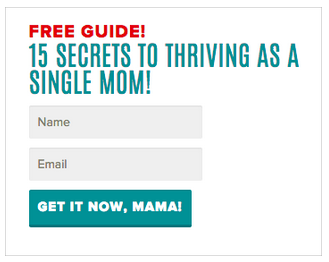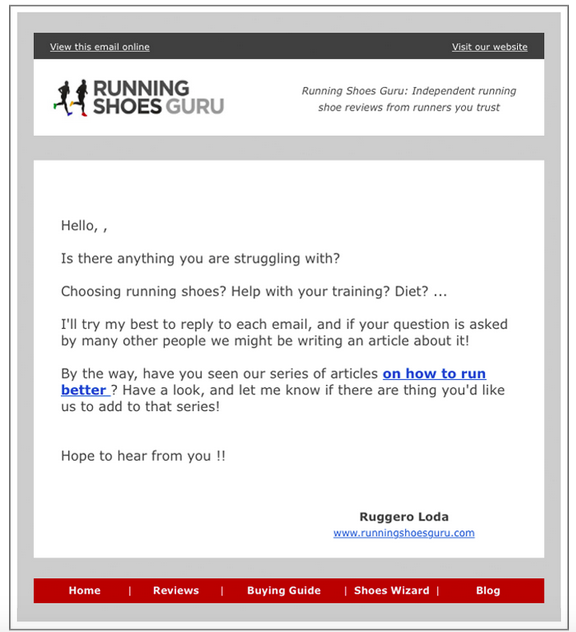Evergreen Content: How to Boost Your SEO and Website Traffic with Timeless Content
By Liz Willits March 17, 2016
Imagine the perfect blog post.
Your perfect blog post brings thousands of people to your site. Your audience reads it from top to bottom, gives their love in the comments and shares it on their social media profiles. An industry expert links to it in one of their blog posts. And ultimately, you see a huge spike in revenue as it brings your website and business into the spotlight.
But wait, there’s more! Months after you initially published your perfect blog post, it continues to draw website visits, shares and increased revenue.
Why does your perfect blog post have such continued success months after publication?
Because it’s evergreen.
What is evergreen content?
Evergreen content is content that is always relevant. It continues to be useful and informative no matter when your audience reads it.
For example, if you’re a nutrition blogger, evergreen content for you might be a blog post called “5 Nutritious Fruits You Should Eat Every Week to Lose Weight.” A blog reader could find value in that blog post now, or they could read it three months or a year from now, and it would still be relevant and useful.
On the other hand, content that is not evergreen will one day cease to be relevant to your audience. A blog post titled “E. Coli Recall: Don’t Eat Broccoli in March if You Live in These Areas” will only be useful during the E. Coli recall. Once the recall is over, this post won’t get much traffic.
But evergreen content is more than just blog posts! It’s any kind of content whose relevancy stands the test of time. Almost anything can be evergreen, but here are some common evergreen content formats you could use:
- eBooks
- Guides
- Emails
- Videos
- Landing Pages
Besides maintaining relevancy, evergreen content is also very valuable. It can continue to grab page visits, comments and social shares months and even years after its initial publication date (and you only need to do the hard work of writing it once!).
All of this engagement demonstrates that the content is valuable and relevant to a large audience, which matters to search engines like Google who treat high engagement as a sign of quality. When Google’s algorithm notices that your content is gaining a lot of engagement, it ranks that content higher.
Translation for all the Google newbies: When your audience types a question into Google’s search engine that includes your content’s keywords, your content has a higher chance of appearing on the first page of organic Google search results.
Because the top four organic results in the first page of Google search engine results get 84 percent of clicks, you need to be on the first page of Google to get any significant organic traffic to your site.
Since evergreen content 1) ranks well in Google (and other search engines like Bing and Yahoo), 2) gets high engagement and 3) gives you long-time value, most of your content should be evergreen. Because honestly, you’re busy, and you need content that packs a big punch and lasts a long time.
How to write evergreen content
1. Answer a common problem or question
First and foremost, evergreen content should solve a problem or answer a question that your target audience struggles with. The bigger and more common the question or problem, the more attention and engagement your blog post will acquire.
Here are some tools and ideas that can help you find out what questions your audience is asking:
Google Keyword Planner: Google Keyword Planner is a free tool included with every Google AdWords account. You can use it to find out how many people are searching for information about a specific keyword or phrase in Google each month. If you find a keyword related to your industry with a high number of searches, you know a lot of people are interested.
Quora: Quora is a site where people can ask and answer questions. Anyone can ask a question and anyone can answer it.
But you can use it to write amazing evergreen content by searching for questions that relate to your industry or business. When you find that quite a few people are asking the same question, write a blog post or guide that answers that question.
For example, if you write a financial investment blog, you might search Quora and find that a lot of people are asking questions about stock investment strategy. As a result, you could write an informative blog post with stock investment strategy tips.
Ask Your Customers/Prospects: While there are tons of tools out there that can help you figure out what questions your audience is asking, it might just be easier to ask your customers or prospects yourself.
Send your subscribers a broadcast email with a survey that asks them what they’d like to learn more about. Or, include your survey email in an automated welcome email series.
2. Link to relevant content
By linking to relevant and useful content within your own content, you show that you’ve done your research and get good vibes from Google when they rank your content more highly in search engine results.
For instance, I know you’re interested in getting more traffic to your site because you read up to this point in my post. And if you’re interested in content marketing, there’s a good chance you have a blog. So you’d probably be interested in these Tips to Drive More Traffic to Your Blog (See what I did there?).
3. Write well and make it readable
One thing holds true for your audience no matter what industry or business you’re in: they’re busy. To increase your engagement, you need to write with your busy audience in mind.
Write in a way that is very easy to read and very easy to scan. Be clear, concise and descriptive. Use brief sentences, include headers to break up sections and write short paragraphs.
4. Maintain your evergreen content
While evergreen content is always relevant, it still needs updates and edits on occasion.
When industry standards change or new research is released, update your evergreen content to reflect that new information. And when you think of valuable insights and info you can add to your content, do it. Evergreen content is a masterpiece that you can keep fine-tuning.
How to promote your evergreen content
Once you’ve written epic evergreen content, it’s time to promote that content. Here are some great ways to promote your evergreen content:
1. Blog it
Share your evergreen blog content by linking to it in relevant locations in blog posts. Or, build a slide in or pop up form on your website that promotes evergreen content (just make sure it’s relevant to your reader if it appears on specific blog posts).
Emma Johnson of Wealthy Single Mommy convinces website visitors to sign up for her email list by promoting her evergreen guide “15 Secrets to Thriving as a Single Mom” as a free incentive for signing up.
Not only is she promoting her evergreen content, but she’s also acquiring more email subscribers. And the best part? Since her guide is evergreen, it keeps providing her value without any additional work on her part.
2. Email it
Email itself can be evergreen content. For example, your autoresponder email series should be evergreen so that it remains relevant over time.
But email is also a great channel for promoting your evergreen content (like blog posts, case studies and ebooks).
Create an autoresponder email series and link to your evergreen content in your emails. You’ll drive traffic to your content and build relationships with subscribers that transcend the inbox.
In an email from an autoresponder email series, Running Shoes Guru links to a series of evergreen blog articles on how to run better. This is a great topic for an evergreen blog post, because it’s relevant to the audience, it will continue to be relevant (unless everyone in the world stops running) and it’s helpful.
3. Social media it (I just invented this phrase ?)
Promote your evergreen content on social media, both when you first publish it and later on.
On that awful day where we lost an hour for Daylight Saving Time (who invented that anyway?), we shared our blog post Time-Saving Email Marketing Tips to Take Back Your Day on the AWeber Twitter account, because we knew our audience was probably trying to figure out how to get that hour back.
Even though we’d originally published and shared this post in January, we could share it again (and at the opportune moment!) because it’s evergreen. That’s one of the amazing things about evergreen content. You can share it for years (just don’t overshare!), and it will continue to be valuable, both to you and your audience.
Go evergreen!
Evergreen content is the superman of the content world. Your evergreen content will attract more engagement, gain higher search engine rankings and keep your readers coming back over and over, all while having lasting value.
What kind of evergreen content are you writing? Share your content ideas and tips in the comments below.
Ready to send your evergreen content with email automation? Try AWeber free.
 87% off ends soon!
87% off ends soon! 



